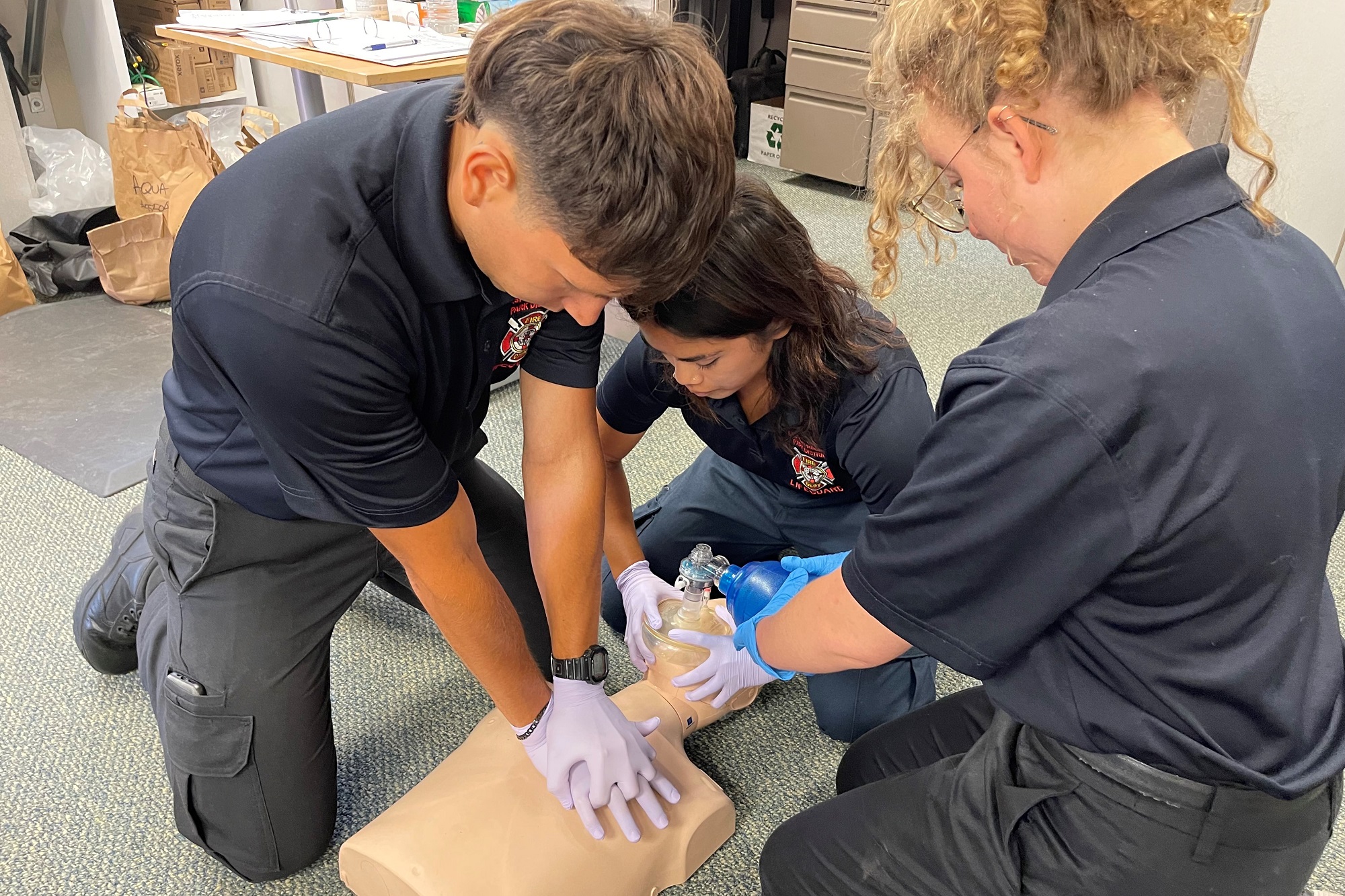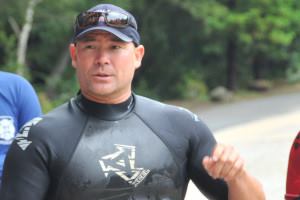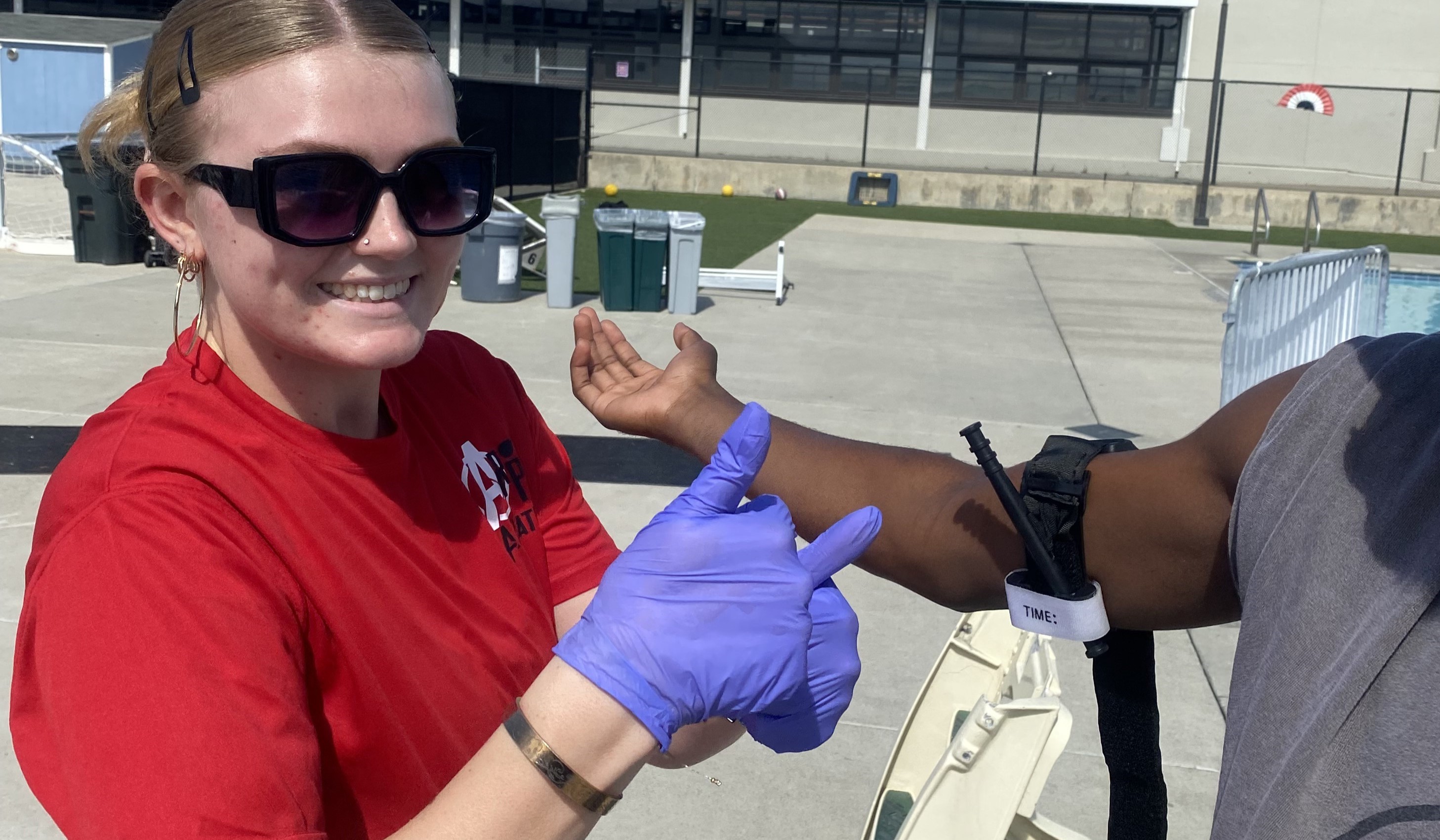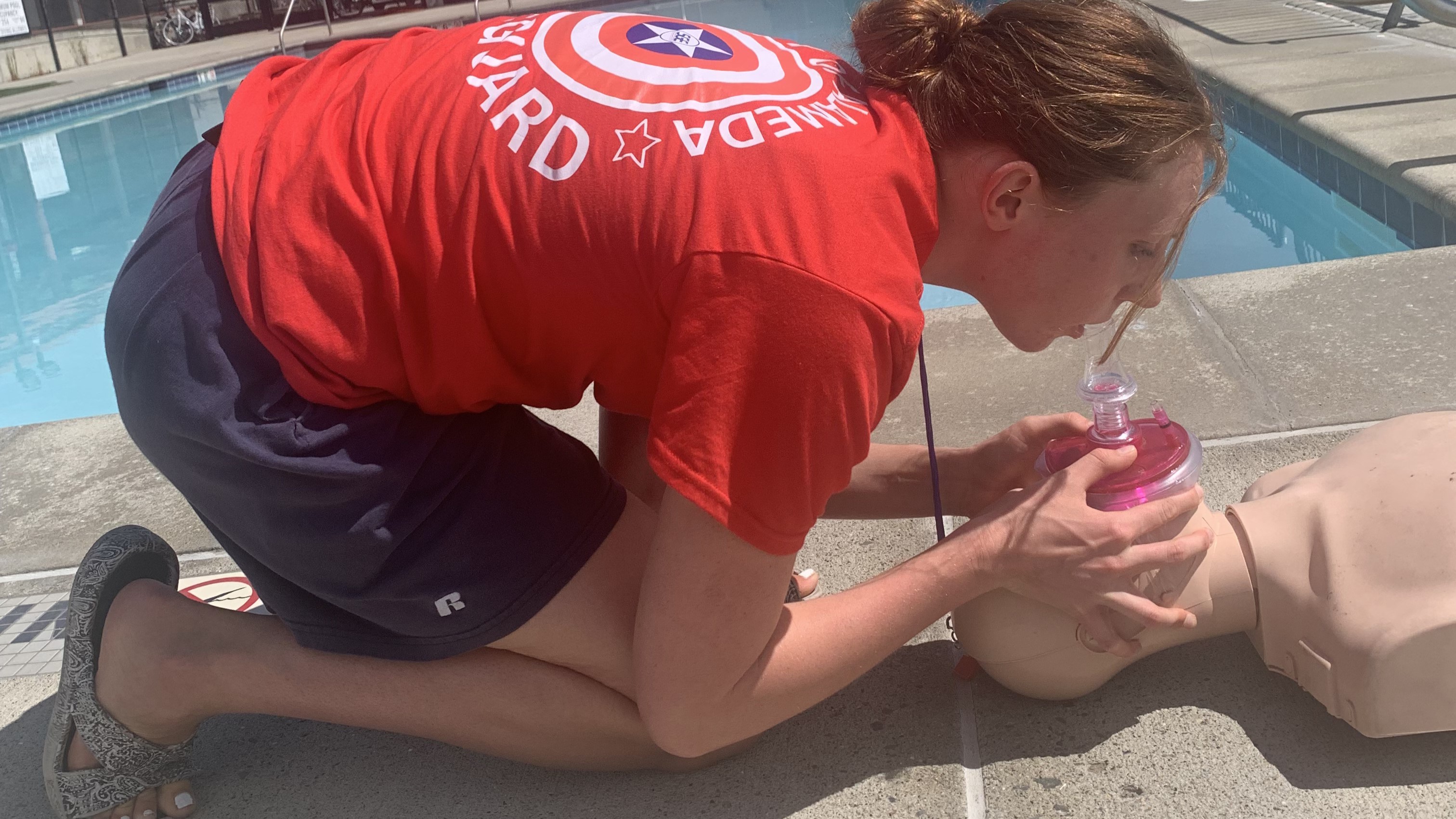Multi-rescuer CPR requires good teamwork, clear communication between lifeguards, proficient skills, and the ability for each lifeguard to be fluid and adapt to the evolving situation.
Multi-rescuer CPR could be two to five rescuers working on one victim. The victim could be on land or come from the water, either traumatic or non-traumatic. All the rescuers must be proficient in:
- Activating EMS
- Safely and quickly rolling/moving a victim
- Safely and quickly extricating a victim from the water
- Performing a primary assessment
- Performing effective and efficient compressions
- Performing effective and efficient ventilations with a resuscitation mask or BVM
NOTE: This in-service is built on the assumption that the rescuers have participated in prior in-service trainings and become proficient in the following drills:
- Gloving up during scene size-up drill
- Body roll drill
- Primary assessment drill
- Activating EMS drill
- Airway maneuver drill
- Mask sealing drill
- These drills appear in previous columns.
Two-Rescuer CPR Progression Drill:
Both lifeguards should be equipped with gloves and resuscitation masks. A manikin will be used, and all drills will be considered a response to a dry victim unless stated.
Objective: Complete the following skills:
- Lifeguards glove up during the scene size-up
- EMS is activated
- Primary assessment completed
- CPR for two minutes
Timing goal: 3 minutes for the lifeguard team to complete the objective.
Once the lifeguard team has accomplished the objective, incorporate these variations to stretch the lifeguards’ abilities.
- Secondary lifeguard has a 5-10 second delay in arriving on scene
- BVM is at the scene, needs to be assembled and used for first round of ventilations
- BVM is brought by secondary lifeguard who has a 5-to-10-second delay
- Victim is a child
- Victim is a child, and the secondary lifeguard has a delayed response, lifeguards must transition from solo CPR to multi-rescuer CPR
- Victim is either a child or adult pulled from the water
- Lifeguards switch positions after three rounds of compressions and ventilations
Three-Rescuer CPR Position Drill:
Lifeguards will move into position around a manikin to provide care, both compressions and ventilations with a BVM. Lifeguards need to avoid clustering and hindering each other.
Objective: Quickly move into proper positions to provide care.
- First rescuer position: lateral or cephalic position to open the victim’s airway and seal
- Second rescuer position: lateral position to provide ventilations with a BVM
- Third rescuer position: lateral to the victim’s chest to perform compressions
Timing goal: 5-10 seconds to complete the objective.
Once proficient, move to the variations:
- Add one lifeguard after team members have positioned themselves. The team will need to incorporate the additional lifeguard into the patient care plan, or utilize them for a secondary assignment, e.g., crowd control or incident command (add 5 seconds)
- Transition one lifeguard in and one lifeguard out, testing the team’s ability to continue providing uninterrupted patient care (add 5 seconds)
Three-Rescuer CPR Progression Drill:
Both lifeguards should be equipped with gloves and resuscitation masks. A manikin will be used, and all drills will be considered a response to a dry victim unless stated.
Objective: Complete the following skills:
- Lifeguards glove up during the scene size-up
- EMS is activated
- Primary assessment completed
- Resuscitation mask or BVM is assembled and ready to use
- CPR for 2 minutes
Timing goal: 3 minutes to complete the objective.
Once the lifeguard team has accomplished the objective, incorporate these variations to stretch the lifeguards’ abilities:
- After one minute, remove one lifeguard from providing patient care. The two remaining will adapt and continue to provide uninterrupted care
- After 1 minute, one lifeguard steps away, to activate EMS, crowd control, etc. The two remaining will adapt and continue to provide uninterrupted care
- After 30 seconds, remove one lifeguard from providing patient care. The two remaining will adapt and continue to provide uninterrupted care. After an additional 30 seconds, the lifeguard will rejoin the group to assist in providing uninterrupted care. Continue to pull one lifeguard out, and put one lifeguard in every 30 seconds for the remainder of the timing goal
- Drill starts with solo lifeguard arriving and initiating care, with the second lifeguard arriving 30 seconds later, and the third lifeguard arriving 60 seconds later (child or adult)
- Victim is a child or adult pulled from the water
- BVM mask becomes compromised and needs to be replaced with a resuscitation mask
Mistakes to Look For
As the trainer, your critical eye is needed to identify lifeguard mistakes that could cause delays or otherwise compromise care. Here are some errors you might see:
- Lifeguards reaching across the victim’s throat to check for a pulse
- The lifeguard’s body position doesn’t support how the victim’s airway is opened or providing an effective seal with the mask
- Lifeguards fail to assemble or use the BVM properly on victim
- The lifeguards either underinflate or overinflate the victim’s chest. Remember: just enough to allow the chest to rise
- Delay in care from spending a large amount of time gloving up or failing to activate EMS
- Improper chest compression depth, ratio and pace
- Improper ventilation ratio and volume
- Lifeguards fail to communicate for a change when switching positions
As the trainer, to make the 30-minute in-service compact and effective, plan on using the best setting at your facility to run this in-service. Make sure you have enough equipment and manikins that have working lungs. Make sure you have extra lungs and are proficient at doing a quick lung change-out.
Remember: Less talk and more skill repetition. The priority for your lifeguards doing multi-rescuer CPR is to effectively communicate and work together as a team when it comes to providing care for a patient.
Good luck and keep training.



